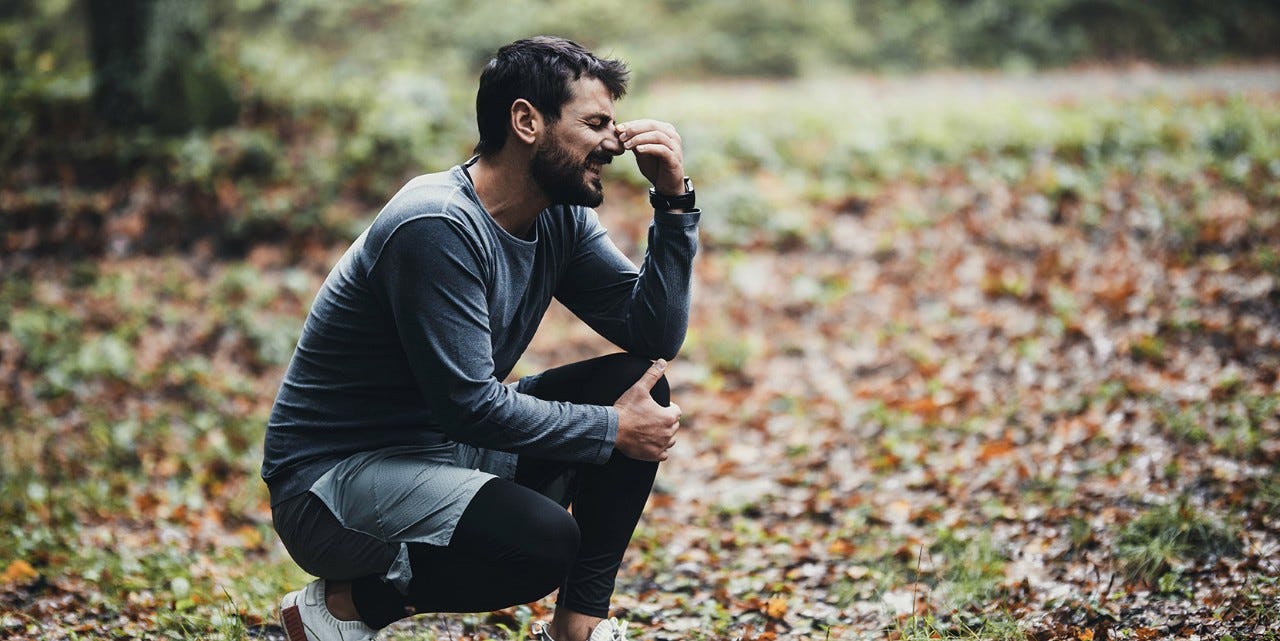Common sports injuries: First aid & prevention
All it takes is a momentary loss of concentration to turn a hiking trip into a hospital trip. What are the most common sports injuries and what first-aid measures can help?

No matter whether you’re a recreational or professional sportsperson, an injury upsets your routine and means you have to take a longer break from sport. Most sports injuries are the result of an accident, but wear and tear from overuse or misuse can also be to blame.
Injuries to tendons and ligaments
Ligaments on all joints can be sprained, pulled or torn. Injuries to the knee and foot are most common, with the external ligaments of the ankle most often affected. Tendons can also be partially or fully torn. Tendon ruptures are most commonly caused by a strong use of force when the muscles are tense or a blow to tense muscles.
Strains, bruises and muscle tears
Explosive movements such as sprinting or jumping carry an increased risk of rupturing a muscle fibre or completely tearing a muscle. A contusion or bruise occurs when the muscle receives a blunt blow, such as in team and contact sports.
Fractures and dislocations
If too much pressure is put on a bone, for example from a fall or a blow, it will break. Overdoing it or doing a movement incorrectly over time can also cause minute cracks, known as fatigue fractures, to form. A fracture can also be a consequence of a dislocated joint. The most common type of dislocation is of the shoulder.
Concussion
A blow to the head or a fall can cause long-term damage. You should stop whatever physical activity you are doing, because a second blow could be critical. In the event of unconsciousness, loss of memory or severe pain, medical help should be sought immediately.
Prevention is better than cure
The best way of preventing injury is to be well prepared. Anyone who gets their skis out the cellar only once a year or takes part in a football tournament without training is more like to be injured.
It’s important that you increase the intensity level slowly and steadily if you want to do sport safely for years to come. This includes doing basic exercises to improve coordination and increase strength. Learning the correct sequences of movements helps you to avoid improper strain from the start.
Recovery is an important part of training that is often forgotten. Overtiredness as a result of either too much training or a busy daily routine leads to an increased risk of injury. Another important factor is warming up. Starting training without a warm-up puts a strain on the muscles, tendons and joints. Suitable equipment, such as a helmet or proper running shoes, can also help prevent injuries.
First aid after sports injuries
Responding correctly after an accident may stop things going from bad to worse and speed up the healing process. After an injury such as a sprain or strain, you should follow the RICE rule: rest, ice, compress, elevate.
-
Rest
Being brave and struggling on is not recommended. This causes the affected area to swell further and delays healing. Or it can make the injury even worse.
-
Ice
Cold makes the blood vessels contract, helping to prevent the tissue around the injury from swelling further. Instead of laying the ice directly against the skin, wrap it in a cloth to prevent frostbite.
-
Compress
An elastic bandage applies gentle pressure to the affected area to reduce swelling. The bandage will also hold the ice pack in place.
-
Elevate
Elevate the injured area. This causes the tissue fluid to flow back and the swelling to go down.
If you think you may have a more serious injury, such as a broken bone, ligament or tendon injury, always see a doctor. If you can still put pressure on the affected area as normal, you can wait to see if it gets better quickly on its own. You shouldn’t wait to seek medical advice in case of a dislocated joint or suspected concussion.
Treating sports injuries: when is surgery required?
Which injuries require surgery? Can I return home straight after surgery or do I have to stay in hospital? Dr Stefan Fröhlich, sports doctor at Balgrist University Hospital, answers the most important questions about sports injuries.
When is surgery required?
Many sports injuries don’t require surgery. A muscle fibre rupture, for example, will heal on its own. And most ligament injuries only need conservative treatment and sometimes immobilisation. One exception is the cruciate ligament. In highly active and competitive sportspeople, this tends to be operated on – at least when we’re talking about sports that require a very high level of knee stability. A ruptured Achilles tendon is also usually operated on in athletes.
Whether surgery is necessary depends on several factors: how active the patient is, their age and which sport they would like to do at which level.
And what do dislocated joints mean for patients?
Dislocated joints can often be put back in place as an outpatient procedure, unless other injuries occur as a result of the dislocation, such as tendon tears or bone fractures. When the patient has multiple injuries, it’s highly likely that surgery will be required.
Which injuries require inpatient treatment?
There’s no general rule about whether an operation can be performed as an outpatient or inpatient procedure. Inpatient treatment is more likely the more extensive an operation is, and the more limited the patient’s mobility.
And if there’s a high risk of the wound being infected, the patient should stay in hospital for a few days for follow-up treatment. Inpatient treatment is required, for example, for surgery on the Achilles tendon, on the cruciate ligament in the knee and for complicated fractures or long bone fractures.
Is it possible to treat any injuries as outpatient procedures?
Minor surgeries on the hands, such as a skier’s thumb or injuries to minor ligaments, can be performed as outpatient procedures. Patients can also usually go straight home after surgery on the meniscus.


